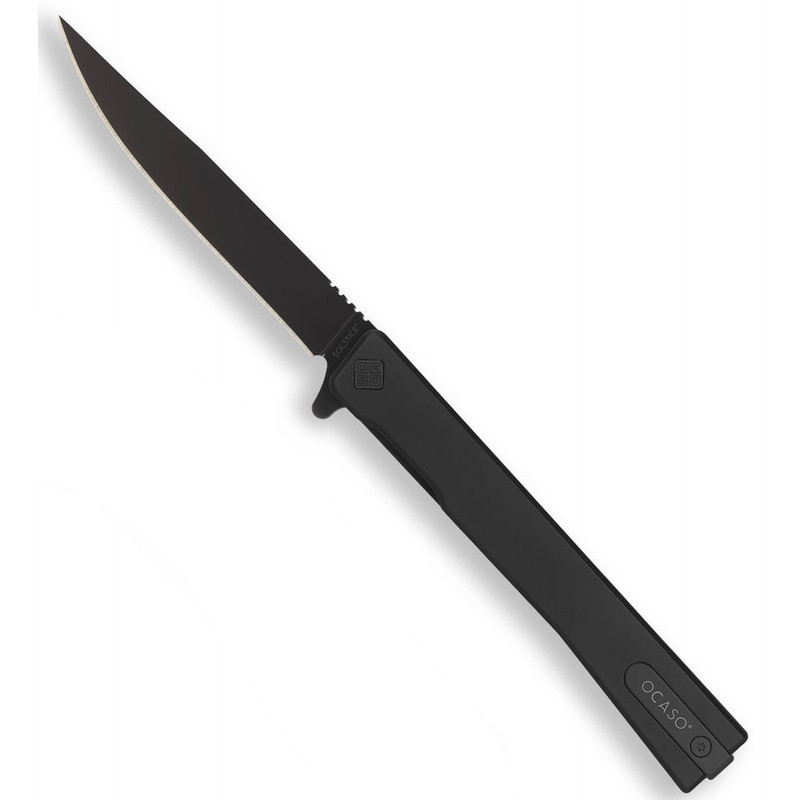The Importance of Ergonomics in Knife Design
Posted by CT on Jul 5th 2023
Introduction
A good knife is a valuable tool in the kitchen or workshop, and one of the most essential factors in the design of a knife is ergonomics. Ergonomics refers to the study of how tools, equipment, and other objects can be designed to maximize efficiency, comfort, and safety. A well-designed ergonomic handle can reduce the risk of injury and improve overall performance when it comes to knives. In this article, we will explore the importance of ergonomics in knife design and how it affects the user's experience.
Ergonomics and Hand Anatomy
Before we dive into the specifics of ergonomic knife design, it's essential to understand how the human hand works. The hand is composed of 27 bones, along with numerous muscles, tendons, and ligaments. These structures work together to allow the hand to perform various functions, including grasping, gripping, and manipulating objects.
The grip is an essential element of knife use, and the handle design should reflect this. The grip of a knife should be comfortable and provide a secure hold for the user. This is particularly important when it comes to knives that require a lot of force, such as cleavers or chef's knives.
Ergonomic handle design considers the hand's shape, the position of the fingers, and the amount of force required to hold the knife. A good handle design will distribute the pressure evenly across the palm of the hand, reducing the risk of injury and increasing comfort during use.
Factors in Ergonomic Knife Design
Now that we understand the importance of ergonomics in knife design let's take a closer look at the specific factors that make up an ergonomic handle design.
Handle Shape
The shape of the handle is one of the most critical factors in ergonomic knife design. It should be designed to fit comfortably in the hand, providing a secure grip and reducing fatigue. The handle shape should also be designed to allow for easy manipulation of the knife, allowing the user to perform the desired task efficiently.
The shape of the handle will also depend on the type of knife. For example, a chef's knife will have a different handle shape than a paring or fillet knife. The chef's knife will have a larger handle to accommodate the larger blade. A paring knife will have a smaller handle to allow for precision cutting.
Handle Material
The handle material is also an essential factor in ergonomic knife design. The material should be durable, comfortable to hold, and provide a secure grip. Common materials used in knife handles include wood, plastic, and metal.
Wood handles are popular for their aesthetics but require more maintenance than other materials. Plastic handles are durable and easy to clean but may not provide the best grip. Metal handles are strong and durable but can be slippery when wet.
Handle Texture
The texture of the handle is another important factor in ergonomic knife design. The texture should provide a secure grip, even when the handle is wet or greasy. Various methods can achieve textures, including knurling, sandblasting, or surface texturing.
The texture of the handle will also depend on the type of knife. A chef's knife may have a smooth handle for easy cleaning, while a fillet knife may have a more textured handle to provide a better grip when handling slippery fish.
Balance
The balance of a knife is another critical factor in ergonomic design. The balance of a knife is determined by the weight distribution between the blade and the handle. A well-balanced knife will reduce the strain on the user's wrist and allow for greater control during use.
A well-balanced knife will distribute the weight evenly between the blade and handle. This will allow for greater control and precision during use. A poorly balanced knife can cause strain on the wrist and lead to a decrease in performance.
The balance of a knife will also depend on the type of knife. For example, a chef's knife will have a different balance point than a fillet knife. The chef's knife will have a balance point closer to the handle to allow greater control during chopping and slicing. In comparison, the fillet knife will have a balance point closer to the blade to allow for greater control during filleting.
Weight
The weight of a knife is also an important factor in ergonomic design. The knife's weight will depend on the type of knife and its intended use. A heavy knife can cause fatigue during use, while a lightweight knife can be challenging to control.
A chef's knife, for example, should have some heft to allow for greater control during chopping and slicing. On the other hand, a fillet knife should be lightweight to allow for greater control during filleting.
Finger Guard
A finger guard is a feature on some knives designed to protect the user's fingers from slipping onto the blade during use. A well-designed finger guard will prevent injury and increase user confidence during use.
The finger guard should be positioned to allow for easy manipulation of the knife while providing adequate protection for the user's fingers. The shape and size of the finger guard will also depend on the type of knife.
Conclusion
Ergonomics is an essential factor in knife design affecting user experience. A well-designed ergonomic handle can reduce the risk of injury and improve overall performance. The shape, material, texture, balance, weight, and finger guard are all essential factors in ergonomic knife design.
When choosing a knife, it's essential to consider the intended use and the user's individual preferences. A good knife should feel comfortable in the hand and provide a secure grip. It should also be well-balanced and easy to manipulate.
In summary, ergonomics should be considered in every aspect of knife design to ensure the user has a comfortable and safe experience. Whether in the kitchen or workshop, a well-designed ergonomic knife can make all the difference.

